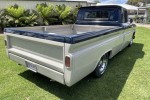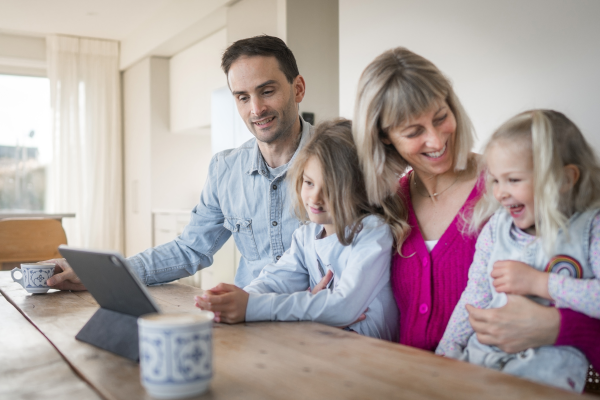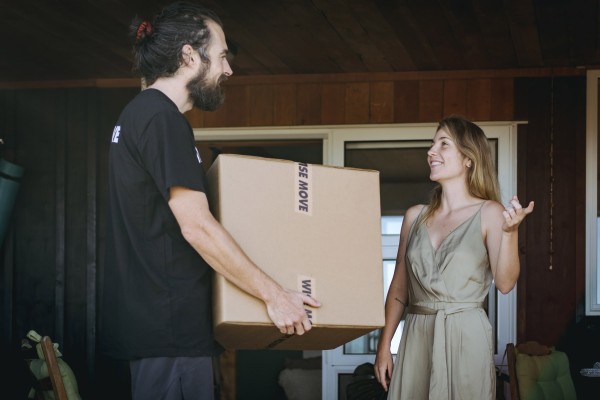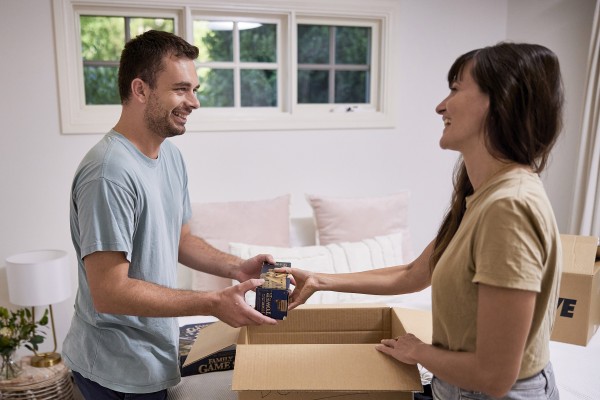Office relocation checklist for a perfectly planned move in Australia

Moving offices in Australia can feel like a huge project, but with the right office relocation plan, it can be the opposite of chaotic. Whether you’re upsizing, downsizing, or just giving your office space a fresh start, this guide covers everything you need to navigate your office relocation like a boss.
Below, we’ve outlined the key steps involved in an office relocation, including checklists, timelines, and project management considerations to help you stay organised from the word ‘go’.
How to plan an office relocation
 When people think about moving offices, it’s easy to picture a few boxes, a removal truck, and a fresh set of keys. The reality is a bit more involved. Workplace change touches every corner of your business, from your IT systems right through to how your team feels about the change. Understanding how to plan an office relocation means considering everything from logistics and furniture to communication and timelines.
When people think about moving offices, it’s easy to picture a few boxes, a removal truck, and a fresh set of keys. The reality is a bit more involved. Workplace change touches every corner of your business, from your IT systems right through to how your team feels about the change. Understanding how to plan an office relocation means considering everything from logistics and furniture to communication and timelines.
Here are the main areas to keep in mind:
Shifting office furniture and equipment
This part of an office relocation is more than just lifting desks and chairs. You’ll need to decide what’s worth taking, what should be recycled or sold, and what new pieces you’ll need for the next space. An early audit of your office furniture helps prevent delays in packing or reassembly.
Large items like boardroom tables, filing cabinets, and reception desks need careful handling, while sensitive items such as servers, safes, or specialised machinery often require specialist movers.
Planning a fit-out for the new space
Your new office space is a blank canvas. A well-planned fit-out shapes not only the look of the office space but also how your team uses it day to day. That includes designing floor plans, placing power points and data cabling, planning lighting, and making sure there are enough collaborative areas as well as quiet zones.
In Australia, fit-out costs have been rising steadily, so it pays to plan early and be clear about your budget and priorities.
Managing IT and communications
Downtime is one of the biggest risks during an office relocation, and your IT systems need to be prioritised accordingly. Relocating your IT infrastructure means thinking about servers, internet connections, phone systems, and video conferencing equipment. Backing up data and testing systems before the move is non-negotiable. It’s also worth scheduling your IT setup so it’s the first thing operational in the new space.
Communicating with your team and suppliers
A relocation is a big shift for everyone involved, so clear communication is essential. Staff need to know when and how the move will affect them, suppliers need to be briefed on delivery schedules, and clients should be updated with your new contact details. Don’t forget remote employees. Make sure they’re included in updates and any training for new systems.
Staying on top of costs and timelines
Moves can get expensive quickly if they aren’t tracked carefully. And when managing an office relocation in Australia, planning your budget and timeline carefully will reduce downtime. Without this, small issues can snowball into expensive delays.
Handled well, an office relocation can be a fresh start. It’s a chance to declutter, modernise your systems, and create a workspace that really supports your team. Done poorly, it can create stress, downtime, and unnecessary expense. The difference lies in how you plan and manage each of these moving parts.
How much does office relocation cost?
 Every office move is different, but here are some recent benchmarks to help you plan a budget.
Every office move is different, but here are some recent benchmarks to help you plan a budget.
|
What |
Average cost |
|
Office fit-out (moderate quality, medium-sized office) |
$2,453/sqm (The average office fit-out cost for a moderate style medium-quality office in Australia) |
|
Furniture and fixtures |
$20,000 – $50,000 (for mid-sized office) |
|
$1,000 – $5,000 |
|
|
Removal and relocation |
$750 – $12,000+, depending on office size and distance. |
|
IT and telecoms network set up, servers, phone systems, etc. |
$10,000 – $40,000 |
|
Contingency (10-20%) |
Usually, budget at least 10-20% extra for unexpected issues. |
Source: 2024 RLB Australia Fit-Out Cost Guide
A few factors drive the costs. These are often the size of your office, the distance of the move, the type of fit-out, and how much IT infrastructure you need to set up, all play a role. Don’t forget to factor in hidden costs like business downtime or updating signage and stationery.
Try using our removalist cost calculator to estimate your move based on distance and volume.
How to manage your office relocation
Here’s a sample timeline that shows how to manage an office relocation from planning through to post-move troubleshooting. Use it to build your own schedule of what to do when and as a handover to your project manager ahead of the move.
Lead-up (10-12 weeks before)
- Appoint project manager/relocation team.
- Visit and finalise new office space, including lease, amenities, and confirmed floor plan.
- Design and plan fit-out: furniture layout, partitioning, lighting, floor plan.
- Communicate with employees, suppliers, and remote staff about the upcoming move.
- Budgeting: get estimates for removalists, fit-out, IT infrastructure, furniture, etc.
- Create a moving list and catalogue existing assets and tasks.
- Ensure legal/compliance (permits, building code, insurance, utilities).
- Begin decluttering, decide what to dispose of, sell, or store.
Mid-phase (6 weeks before)
- Confirm all supplier contracts (removals, fit-out contractors, electricians, IT, telecoms).
- Begin packing non-essential items.
- Label everything: boxes, furniture, electronics.
- Set up new IT infrastructure planning: servers, network, internet/telecom, backup, security.
- Prepare team training or briefings (new space norms, health & safety, use of new facilities).
- Update business contact info: address, permits, licenses, stationery, and website.
Pre-move (1-2 weeks before)
- Final walk-throughs of old and new spaces.
- Confirm moving schedule (times for removalists).
- Ensure packaging and labelling are complete.
- Inform clients/customers of any temporary disruption.
- Pre-move IT test/backup.
- Clearances, utility switch-overs (power, water, security, internet).
- Finalising placement for furniture and major equipment according to the floor plan.
Office moving day
- Arrival at new site: supervisor/relocation lead present.
- Follow the floor plan to place furniture, partitions, workstations, etc.
- IT setup on arrival: networking, computers, phones, audio-visual.
- Check all goods delivered undamaged.
- Begin unpacking essentials first.
- Safety checks, health & safety: walkways, lighting, emergency paths.
- Confirm utilities are working (power, water, HVAC, internet).
Post-move (1-2 weeks after move)
- Troubleshooting: fix any glitches in IT, lighting, air conditioning, etc.
- Feedback from staff: what’s working, what isn’t
- Full unpacking & arranging
- Training sessions or refreshers (new equipment, software, safety)
- Update external and internal communications (website, signage, stationery, contacts)
- Review project against budget, timelines, and what could improve next time
Office relocation checklist for Australian businesses

Most Australian businesses use a moving checklist to stay organised during an office relocation. Here’s a detailed office moving list and relocation checklist to help make sure nothing slips through the cracks.
Project management and roles
- Assign a project management lead to oversee the move.
- Create a detailed moving list to catalogue assets and tasks.
- Designate teams for furniture, IT, communication and logistics
- Plan your office relocation in Australia with a detailed moving checklist and timeline.
Office fit-out, floor plan and space setup
- Obtain floor plans of the new space.
- Plan furniture layout (desks, meeting rooms, breakout, storage).
- Map out power outlets, networking and lighting.
- Decide on flooring and partitions.
- Check compliance (fire safety and accessibility).
Furniture and fixtures
- Audit all office furniture to decide what to keep, replace or get rid of.
- Order new furniture early.
- Arrange delivery and installation times.
- Label furniture to match the new floor plan.
IT and infrastructure
- Plan network and server relocation or setup.
- Confirm the internet and telecoms activation date.
- Back up data and test downtime minimisation plans.
- Organise AV systems and phone systems.
- Set up security (locks, alarms, access cards).
Budget and costs
- Get quotes from removalists and contractors.
- Set a realistic budget with a 10–20% contingency.
- Factor in hidden costs.
- Track budget vs. actual throughout the process.
Team preparation and communication
- Inform employees early.
- Run training sessions or orientations for the new space.
- Communicate with remote staff, external suppliers and customers about the address change and any disruptions.
- Share safety information for the new office.
Packing & labelling
- Label boxes with department, person and new office destination.
- Pack non-essentials early.
- Photograph or catalogue sensitive/fragile items.
- Pack the IT equipment last and unpack it first.
Logistics & timing
- Book removalists, contractors and cleaners.
- Coordinate utility shut-off and activation at the new office.
- Arrange any required permits or building approvals.
- Plan transport routes, parking and unloading access.
After the move setup
- Carry out safety checks.
- Organise cleaning.
- Complete final inspections.
- Collect employee feedback.
- Update signage, stationery, legal address and contact info.
- Do a maintenance check (HVAC, lighting, etc.).
Common mistakes to avoid when you're moving office
Even well-organised office relocations can run into issues. Watch out for these common pitfalls:
- Skipping a contingency budget: Last-minute issues are almost guaranteed. Budget 10–20% extra.
- Leaving IT setup to the last minute: Tech delays can cause major downtime.
- Poor communication with staff and suppliers: Uncertainty affects morale and operations.
- Underestimating how long packing takes: Label early and get help where needed.
- Not planning the new space layout: A poor floor plan creates friction from day one.
- Not confirming removalist insurance: Businesses often assume insurance is included, but it varies. See Choosing a removalist | NSW Government or Using a removalist | Queensland Government for guidance on what to check for.
Avoiding these mistakes can save time, money, and team frustration.
Top FAQ (Frequently Asked Questions) about moving offices
Q: What is the average cost of office relocation in Australia?
A: It ranges from $10,000 to over $100,000 depending on your office size, fit-out complexity, IT setup, and how far you’re moving. A contingency budget of 10–20% is also recommended.
Make it a smooth office move with Upmove
 Relocating your office is a big project, but with the right planning and a clear checklist, you can keep stress to a minimum. From budgeting and timelines to fit-outs and IT setup, preparation is everything.
Relocating your office is a big project, but with the right planning and a clear checklist, you can keep stress to a minimum. From budgeting and timelines to fit-outs and IT setup, preparation is everything.
If you’re ready to take the next step, you’ll want reliable, affordable and experienced removalists. Whether you’re moving a small team or an entire office floor, Upmove makes it easy to find and book office removalists near you.
What do our customers say?




























